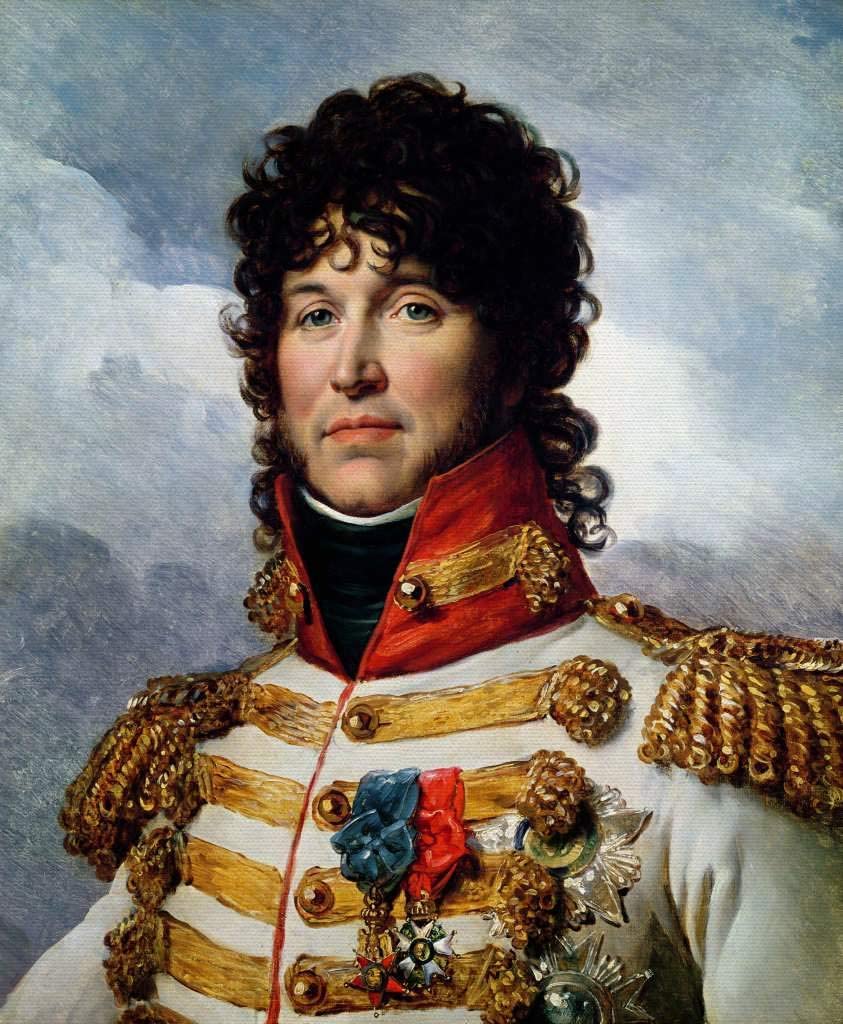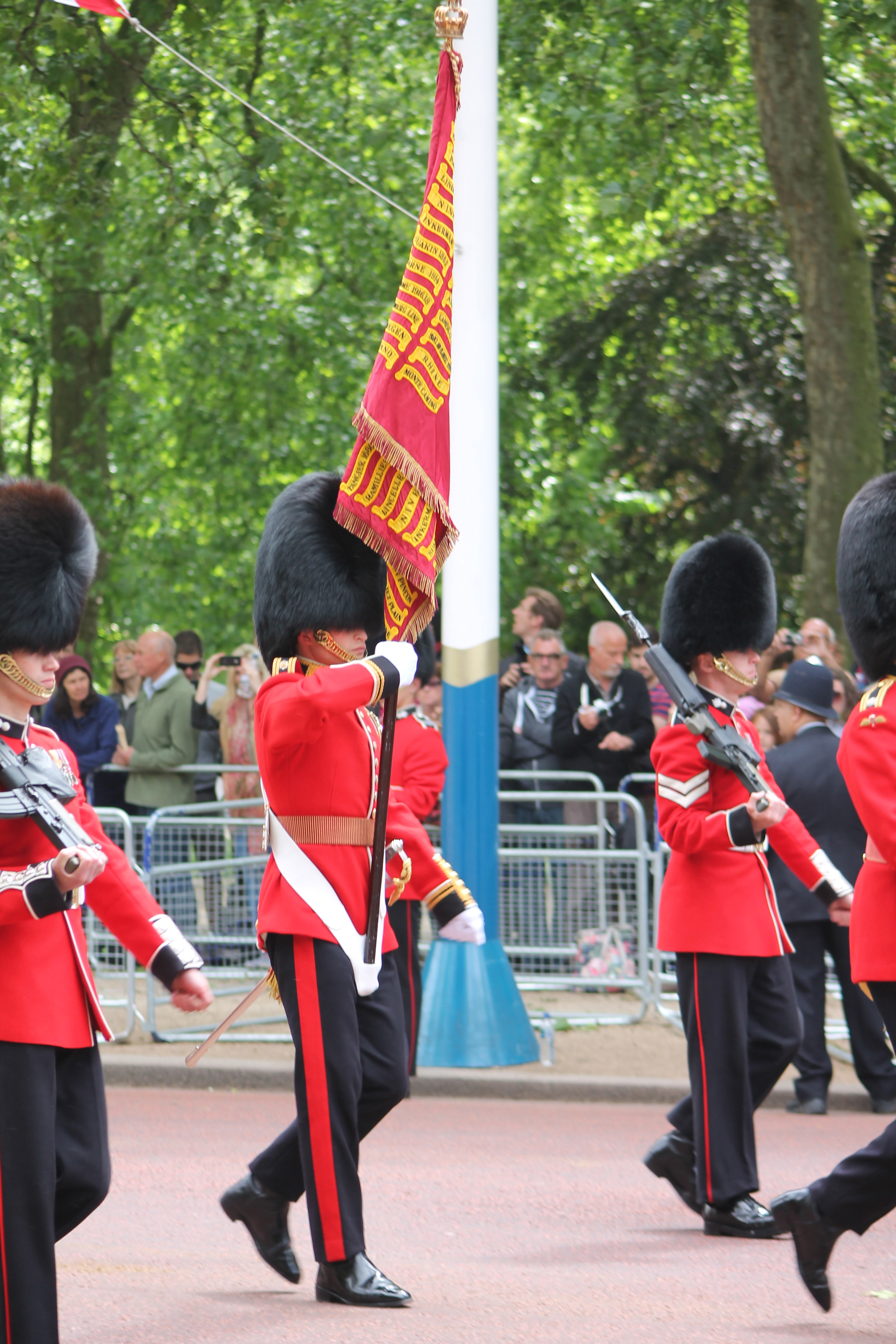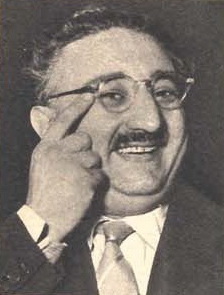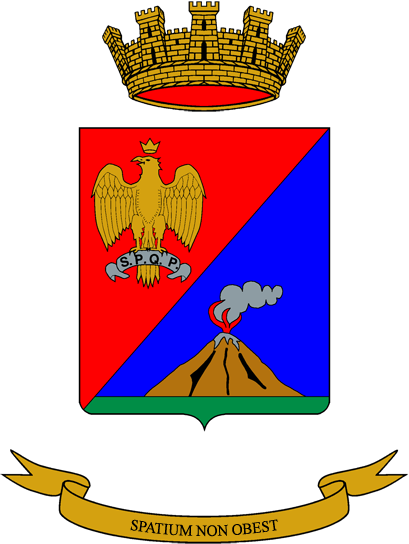|
45th Signal Regiment (Italy)
The 45th Signal Regiment () is an signals regiment of the Italian Army. The unit was formed as a battalion in 1957 and operated the army's telecommunications network in the Apulia, Basilicata, Calabria, Campania and Molise regions. In 1975, the battalion was named for Monte Vulture and received its own flag. In 1993, the battalion lost its autonomy and entered the newly formed 45th Signal Regiment. In 2001, the 45th Signal Regiment was disbanded and the Signal Battalion "Vulture" transferred to the 46th Signal Regiment. The regiment's anniversary falls, as for all signal units, on 20 June 1918, the day the Austro-Hungarian Army began its retreat across the Piave river during the Second Battle of the Piave River. History Cold War On 1 October 1957, the XLV Signal Battalion was formed in Bagnoli with the personnel and materiel of the existing 9th Territorial Signal Company in Bari and the 10th Territorial Signal Company in Bagnoli. The battalion consisted of a command, a co ... [...More Info...] [...Related Items...] OR: [Wikipedia] [Google] [Baidu] |
Italian Army
"The safeguard of the republic shall be the supreme law" , colors = , colors_labels = , march = ''Parata d'Eroi'' ("Heroes's parade") by Francesco Pellegrino, ''4 Maggio'' (May 4) by Fulvio Creux , mascot = , equipment = , equipment_label = , battles = Risorgimento War of 1866Italo-Ethiopian War of 1887–1889 Mahdist WarFirst Italo-Abyssinian WarBoxer Rebellion Italo-Turkish WarWorld War I Second Italo-Abyssinian WarSpanish Civil WarItalian invasion of AlbaniaWorld War IIGulf WarKosovo War 1999 East Timorese crisis Global War on Terrorism *Iraq War * War in Afghanistan , anniversaries = 4 November, National Unity and Armed Forces Day 4 May, Army Day , decorations = 3 Cavalier Crosses of the Military Order of Italy 1 Gold Medal of Military Valor 2 Gold Medals of Civil Valor 1 Silver Medal of Ci ... [...More Info...] [...Related Items...] OR: [Wikipedia] [Google] [Baidu] |
Bari
Bari ( , ; nap, label= Barese, Bare ; lat, Barium) is the capital city of the Metropolitan City of Bari and of the Apulia region, on the Adriatic Sea, southern Italy. It is the second most important economic centre of mainland Southern Italy after Naples. It is a port and university city, as well as the city of Saint Nicholas. The city itself has a population of 315,284 inhabitants, over , while the urban area has 750,000 inhabitants. The metropolitan area has 1.3 million inhabitants. Bari is made up of four different urban sections. To the north is the closely built old town on the peninsula between two modern harbours, with the Basilica of Saint Nicholas, the Cathedral of San Sabino (1035–1171) and the Hohenstaufen Castle built for Frederick II, which is now also a major nightlife district. To the south is the Murat quarter (erected by Joachim Murat), the modern heart of the city, which is laid out on a rectangular grid-plan with a promenade on the sea and th ... [...More Info...] [...Related Items...] OR: [Wikipedia] [Google] [Baidu] |
Shrine Of The Flags
The Victor Emmanuel II National Monument ( it, Monumento Nazionale a Vittorio Emanuele II), also known as Vittoriano or Altare della Patria ("Altar of the Fatherland"), is a large national monument built between 1885 and 1935 to honour Victor Emmanuel II, the first king of a unified Italy, in Rome, Italy. It occupies a site between the Piazza Venezia and the Capitoline Hill. The monument was realized by Giuseppe Sacconi. From an architectural perspective, it was conceived as a modern ''forum'', an agora on three levels connected by stairways and dominated by a portico characterized by a colonnade. The complex process of national unity and liberation from foreign domination carried out by King Victor Emmanuel II of Savoy, to whom the monument is dedicated, has a great symbolic and representative value, being architecturally and artistically centred on the Italian unification—for this reason the Vittoriano is considered one of the national symbols of Italy. It also preserves t ... [...More Info...] [...Related Items...] OR: [Wikipedia] [Google] [Baidu] |
Sicily
(man) it, Siciliana (woman) , population_note = , population_blank1_title = , population_blank1 = , demographics_type1 = Ethnicity , demographics1_footnotes = , demographics1_title1 = Sicilian , demographics1_info1 = 98% , demographics1_title2 = , demographics1_info2 = , demographics1_title3 = , demographics1_info3 = , timezone1 = CET , utc_offset1 = +1 , timezone1_DST = CEST , utc_offset1_DST = +2 , postal_code_type = , postal_code = , area_code_type = ISO 3166 code , area_code = IT-82 , blank_name_sec1 = GDP (nominal) , blank_info_sec1 = €89.2 billion (2018) , blank1_name_sec1 = GDP per capita , blank1_info_sec1 ... [...More Info...] [...Related Items...] OR: [Wikipedia] [Google] [Baidu] |
San Giorgio A Cremano
San Giorgio a Cremano is a primarily residential town and ''comune'' in the Metropolitan City of Naples, in Italy. It is located on the foothills of Mount Vesuvius to the west of the volcano, and is six kilometres to the south east of the centre of Naples. Most parts of the municipality command views of Mount Vesuvius, Mount Somma and the Bay of Naples. San Giorgio a Cremano was first settled in the 10th and 11th centuries, and has since been fairly regularly affected by the eruptions of Mount Vesuvius. Along with Portici, Ercolano, Torre del Greco, and Torre Annunziata, San Giorgio a Cremano is one of the five traditional towns that were to be found heading south from Naples on the coastal road along the Bay of Naples. In the 18th century the comune had become a popular tourist resort, and attracted wealthier residents and the aristocracy from the Kingdom of the Two Sicilies, before going into decline following Italian unification, although primary industries and agriculture have ... [...More Info...] [...Related Items...] OR: [Wikipedia] [Google] [Baidu] |
Military Colours, Standards And Guidons
In military organizations, the practice of carrying colours (or colors), standards, flags, or guidons, both to act as a rallying point for troops and to mark the location of the commander, is thought to have originated in Ancient Egypt some 5,000 years ago. The Roman Empire also made battle standards a part of their vast armies. It was formalized in the armies of Europe in the High Middle Ages, with standards being emblazoned with the commander's coat of arms. General use As armies became trained and adopted set formations, each regiment's ability to keep its formation was potentially critical to its, and therefore its army's, success. In the chaos of battle, not least due to the amount of dust and smoke on a battlefield, soldiers needed to be able to determine where their regiment was. Regimental flags are generally awarded to a regiment by a head of state during a ceremony. They were therefore treated with reverence as they represented the honour and traditions of t ... [...More Info...] [...Related Items...] OR: [Wikipedia] [Google] [Baidu] |
Giovanni Leone
Giovanni Leone (; 3 November 1908 – 9 November 2001) was an Italian politician, jurist, and university professor. A founding member of the Christian Democracy (DC), Leone served as the President of Italy from December 1971 until June 1978. He also briefly served as Prime Minister of Italy from June to December 1963 and again from June to December 1968. He was also the president of the Chamber of Deputies from May 1955 until June 1963. Leone was the first Italian president to resign for a scandal. In 1978, he was accused of bribery amid the Lockheed bribery scandals; however, the allegations were later declared false and Leone was completely rehabilitated. Early years Leone was born in Naples in 1908 to Mauro Leone and Maria Gioffredi, both from Pomigliano d'Arco, his father, Mauro Leone, was a prominent lawyer, and had participated in the foundation of the Italian People's Party in Campania. Leone grew up in Pomigliano d'Arco, where he attended the classic lyceum, gradua ... [...More Info...] [...Related Items...] OR: [Wikipedia] [Google] [Baidu] |
President Of The Italian Republic
President most commonly refers to: *President (corporate title) *President (education), a leader of a college or university *President (government title) President may also refer to: Automobiles * Nissan President, a 1966–2010 Japanese full-size sedan * Studebaker President, a 1926–1942 American full-size sedan * VinFast President, a 2020–present Vietnamese mid-size SUV Film and television *''Præsidenten'', a 1919 Danish silent film directed by Carl Theodor Dreyer * ''The President'' (1928 film), a German silent drama * ''President'' (1937 film), an Indian film * ''The President'' (1961 film) * ''The Presidents'' (film), a 2005 documentary * ''The President'' (2014 film) * ''The President'' (South Korean TV series), a 2010 South Korean television series * ''The President'' (Palestinian TV series), a 2013 Palestinian reality television show *''The President Show'', a 2017 Comedy Central political satirical parody sitcom Music *The Presidents (American soul band) *Th ... [...More Info...] [...Related Items...] OR: [Wikipedia] [Google] [Baidu] |
Province Of Reggio Calabria
The Province of Reggio Calabria ( it, Provincia di Reggio Calabria) was a province in the Calabria region of Italy. It was the southernmost province in mainland Italy and is separated from the island of Sicily by the Strait of Messina. The capital was the city of Reggio. It was effectively replaced by the Metropolitan City of Reggio Calabria in 2017. Geography The province of Reggio Calabria was located at the extreme southern tip of mainland Italy. To the west lies the Tyrrhenian Sea and to the south and southeast lies the Ionian Sea. The land borders are short; to the northeast lies the province of Catanzaro and to the northwest, the province of Vibo Valentia. Across the Strait of Messina, some to the southwest, lies the island of Sicily. The province can be divided into three types of terrain. Near the west it is mountainous, with the Aspromonte massif being formed of overlapping terraces of gneiss and mica schists. The highest point is and this area is part of the As ... [...More Info...] [...Related Items...] OR: [Wikipedia] [Google] [Baidu] |
Apennine Mountains
The Apennines or Apennine Mountains (; grc-gre, links=no, Ἀπέννινα ὄρη or Ἀπέννινον ὄρος; la, Appenninus or – a singular with plural meaning;''Apenninus'' (Greek or ) has the form of an adjective, which would be segmented ''Apenn-inus'', often used with nouns such as ("mountain") or Greek (), but ''Apenninus'' is just as often used alone as a noun. The ancient Greeks and Romans typically but not always used "mountain" in the singular to mean one or a range; thus, "the Apennine mountain" refers to the entire chain and is translated "the Apennine mountains". The ending can vary also by gender depending on the noun modified. The Italian singular refers to one of the constituent chains rather than to a single mountain, and the Italian plural refers to multiple chains rather than to multiple mountains. it, Appennini ) are a mountain range consisting of parallel smaller chains extending along the length of peninsular Italy. In the northwest the ... [...More Info...] [...Related Items...] OR: [Wikipedia] [Google] [Baidu] |
Alps
The Alps () ; german: Alpen ; it, Alpi ; rm, Alps ; sl, Alpe . are the highest and most extensive mountain range system that lies entirely in Europe, stretching approximately across seven Alpine countries (from west to east): France, Switzerland, Italy, Liechtenstein, Austria, Germany, and Slovenia. The Alpine arch generally extends from Nice on the western Mediterranean to Trieste on the Adriatic and Vienna at the beginning of the Pannonian Basin. The mountains were formed over tens of millions of years as the African and Eurasian tectonic plates collided. Extreme shortening caused by the event resulted in marine sedimentary rocks rising by thrusting and folding into high mountain peaks such as Mont Blanc and the Matterhorn. Mont Blanc spans the French–Italian border, and at is the highest mountain in the Alps. The Alpine region area contains 128 peaks higher than . The altitude and size of the range affect the climate in Europe; in the mountains ... [...More Info...] [...Related Items...] OR: [Wikipedia] [Google] [Baidu] |
46th Signal Battalion "Mongibello"
The 46th Signal Regiment ( it, 46° Reggimento Trasmissioni) is a national support signals regiment of the Italian Army based in Palermo in Sicily and Nocera Inferiore in Campania. The unit was formed in 1976 as a battalion named for Mount Mongibello. The battalion operated and maintained the army's telecommunication network on the island of Sicily. In 1997 the battalion entered the newly formed 46th Signal Regiment, which in 1998 joined the army's Signal Command. In 2001 the regiment received the Battalion "Vulture" from the disbanded 45th Signal Regiment, which operated and maintained the army's telecommunication network in southern Italy. Since then the regiment operates and maintains the army's telecommunication network in southern Italy and Sicily. History On 1 January 1953 the 11th Connections Company was raised for the XI Territorial Military Command in Palermo. On 1 September 1956 the company was renamed 6th Signal Company. During the 1975 army reform the army disba ... [...More Info...] [...Related Items...] OR: [Wikipedia] [Google] [Baidu] |








